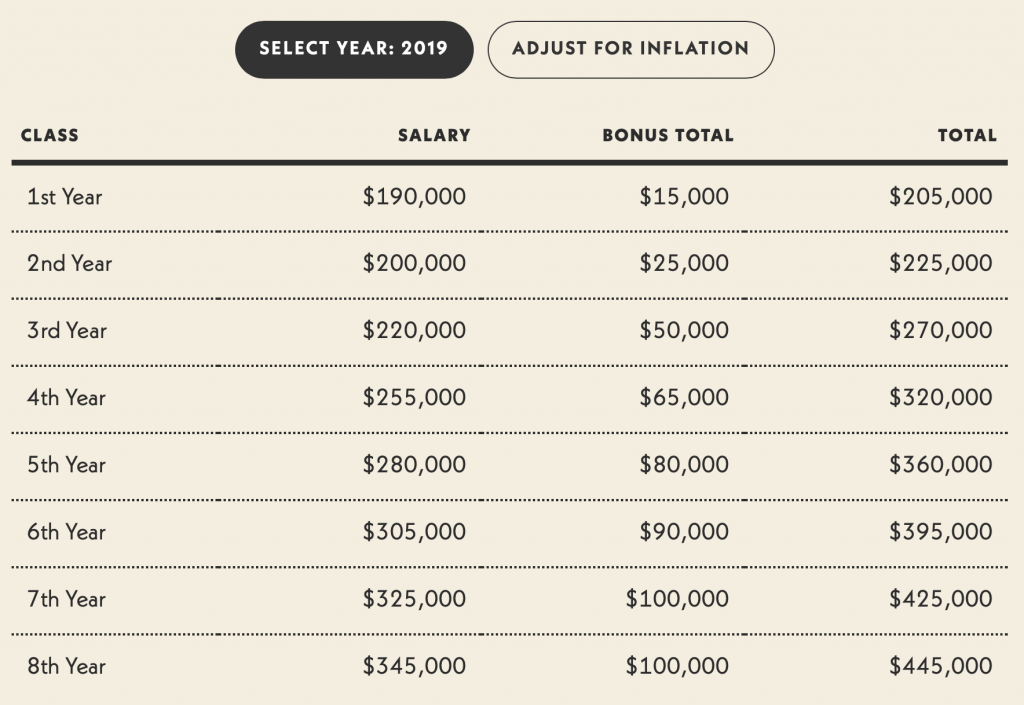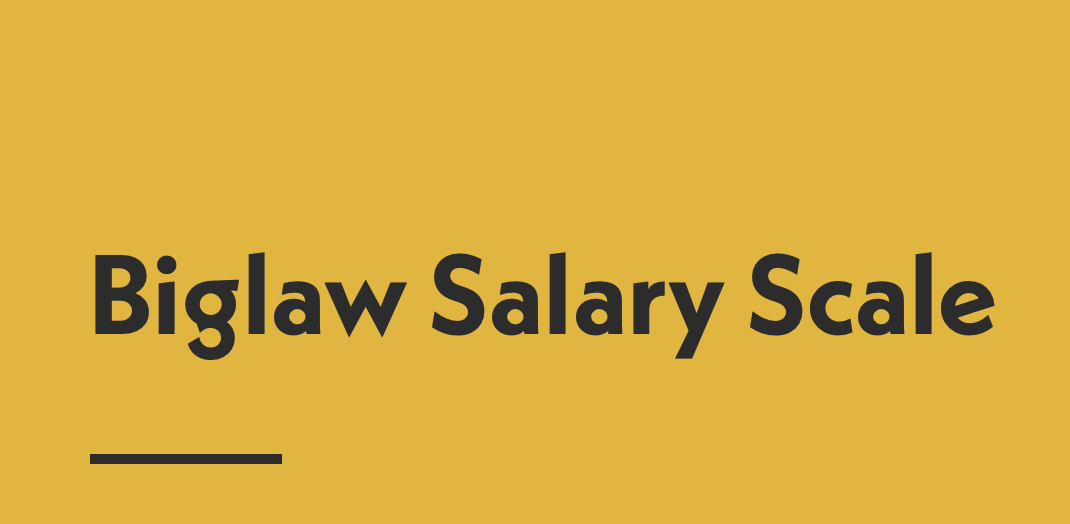Below is the current biglaw salary scale, along with historical data on the previous salary scales and calculations with inflation-adjusted dollars.
Biglaw has no official definition, but loosely refers to the nation’s largest law firms by headcount, smaller firms that pay at the market rate or medium-sized firms with international reach. Most Biglaw firms are located in the major U.S. cities. Lawyers working in Biglaw are generally paid on the Cravath scale, which is a system of lockstep associate compensation based on the number of years out of law school and paid to New York lawyers working at Cravath. Not only are all lawyers on the this pay scale paid the same, they can generally expect to receive the same market bonus each year.
It’s called the Cravath scale because it’s an offshoot of the Cravath system and because Cravath, Swaine & Moore LLP is generally considered the trendsetter when it comes to associate salaries (despite the fact that other firms, such as Milbank and Simpson Thacher have been the first movers on first-year associate salaries in the past few years). Given the lockstep nature, associates and law students (as well as their in-house peers) tend to follow any changes to the Biglaw salary scale closely.
The Cravath scale has largely stayed the same across the major law firms because those firms are competing for the best law students from the best law schools. If one firm offers a higher salary, historically the other firms tend to announce salary increases shortly thereafter. The above tables show the current Biglaw salary scale, as well historical changes in associate compensation and a comparison of the historical Biglaw associate salaries with the current Cravath scale on an inflation-adjusted basis. Please click on the graphic below to see the full article, along with an interactive version of the chart.

Our thanks to Biglaw Investor for sharing this information.



Join the conversation!